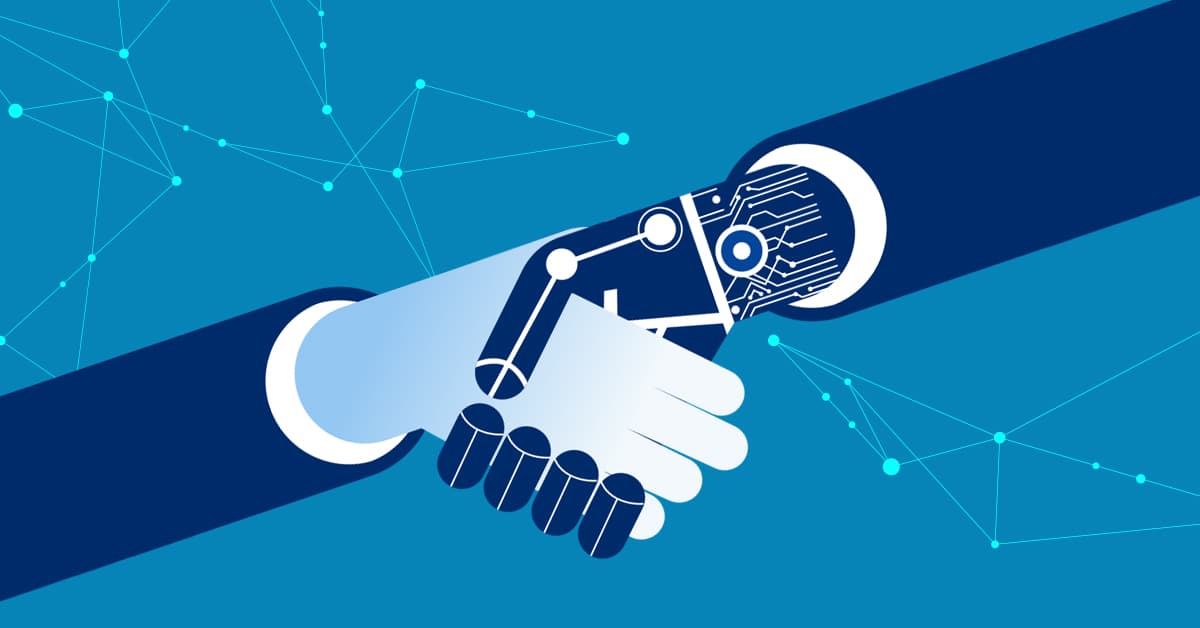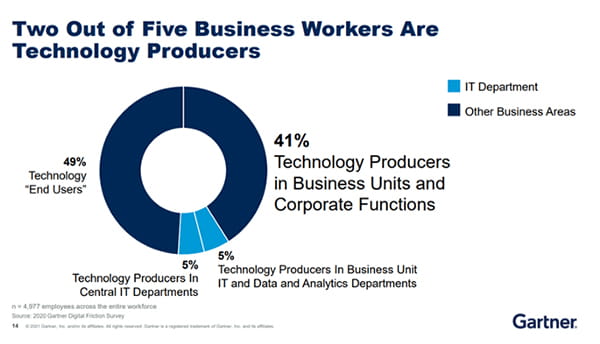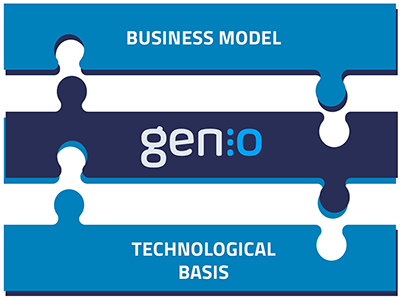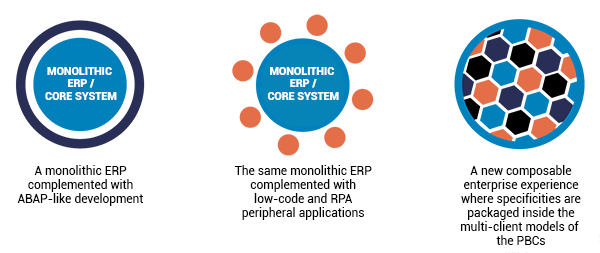7 inGENIOus software development trends you cannot ignore
João Simões de Abreu, February 10, 2022
Coding is bad!
A bold statement, I know. But here is why: the more lines of code a system has, the more prone to errors it will be. On top of this, code tends to deteriorate over time. You traditionally have two options: you either let it rot or permanently maintain the code. The latter will require a substantial amount of time that you could spend adding business value elsewhere. Letting the code become obsolete is just like having a bomb on your lap that will eventually explode without warning — most likely, in the worst of times. There is no upside.
Do not get us wrong; coding is fundamental, and we understand it can be reasonably fun, but more often than not, it is better not to write any code when possible.
Manual coding in this day and age should be seen as an insult to productivity. Current implemented software development should be perceived as the way fabrics used to operate in a pre-industrial society: a large workforce is required to drive small results. It is time to let machines — mostly artificial intelligence (AI) — lend us a helping robotic hand to reduce system errors, boost productivity, and make business operations more agile, resilient, and enduring.
It is time to empower businesses with the agility the current demanding times require. GENIO, the agile platform for modeling and automatic generation of integrated information systems, is Quidgest’s answer to this challenge.
You might be skeptical about this software development approach. Follow through these seven trends, and I will hopefully change the way you look at software development.
- Declarative (+AI inference) instead of procedural
- Model instead of Code
- Learning how to describe a solution instead of learning how to code
- Composable instead of Monolithic
- Future-ready software instead of Technology Bounded
- Industrialized Lean-Agile (GenOps) instead of Agile
- Mass-Customization & Multi-Customer Model Print instead of peripheral layer Customization
1. Declarative (+AI inference) instead of procedural
Companies’ software developers must follow a declarative path and leave behind procedural/imperative programming languages to enhance productivity and agility.
Why? In simple terms, in procedural language, you must define the whole process and provide the information on how to do it. In contrast, in declarative language, you just set the command or order and leave it to the system to complete it — hence the agility and productivity boost.
Here is a real-world example of how the two types of languages answer to a simple need: “I need a cup of coffee.”
While you have to describe the algorithm step-by-step in a procedural language, you focus on the result in a declarative language.
Additionally, GENIO attaches the declarative process to AI inference.
2. Model instead of Code
As stated above, we are firm believers manual code should be restricted to be the bare minimum. Instead of traditional or visual coding, we model.
That represents a higher level of abstraction and enables developers using GENIO to increase productivity by a factor of 100. Models are a superior version of code. In it, you can find all the knowledge, the right concepts, the advantages and, most importantly, the business rules. The possibility and ease of continuous development is another reason for models’ superiority.
It may be confusing. But think of a 3D printer. Although part of the true value of the technology resides on the printed model, the most valuable aspect is the digital 3D model, which can be quickly transferred and printed anywhere in the world.
It can be hard to measure programmers’ productivity, but we often use function points to measure it. As you can see in the following image, there a clear difference productivity-wise in work developed by a single programmer throughout a year.
3. Learning how to describe a solution instead of learning how to code
One of the on-going pains in the software industry is the miscommunication between business needs and technology. Business leaders often do not get tech experts’ explanations, and tech experts do not get business leaders’ needs.
We are advocates that it should be the technology that adapts to businesses and not the way around. Through GENIO, business leaders can get hands-on projects without a 500+ hour training — they are only required to understand GENIO’s base-concepts and develop from that point forward.
Interested? Feel free to enroll at Quidgest Academy.
4. Composable instead of Monolithic
Monolithic systems, in which functionally distinguishable aspects are interlaced and cannot be separated, are far from representing what organizations require today — they are bulky and lack flexibility.
In the past, organizations were only prepared for one type of future. But now, the pandemic showed business leaders they must plan for multiple futures. Composable business means creating an organization made from interchangeable blocks. This means its nature enables a business to reorganize and reorient as needed. External or internal variables, such as a shift in customer values or a sudden change in supply chain or material, are no longer a threat to the operation.Gartner predicts that, by 2023, organizations that have adopted a composable approach will outpace their competitors by 80% to implement new features.
As stated in our Intelligent Composable Business: the agile answer to an everchanging landscape piece, “if an organization’s infrastructure is not capable of following the needs of the market, not only will that organization be more exposed to unpredictable variables, but it will also be slower to answer the demands of their customers, missing opportunities and falling behind their competitors.”
5. Future-ready software instead of Technology Bounded
Most technology will be outdated after a five-year cycle. Once again, this represents an issue to organizations since they must acquire new technology every five years to keep their leading positions in the sector.
However, with Quidgest’s ingenuity, organizations are above technology. This means that the systems can be easily transformed to adapt to the latest languages without completely renovating the operation. Business capabilities remain the same or are augmented by the latest tech trend. Either way, by adopting a GENIO-powered solution, decision-makers will not need to fear obsolescence since their operation will permanently be future-ready.
6. Industrialized Lean-Agile (GenOps) instead of Agile
The Agile approach was never enough to fulfill the market’s fast software development needs. Today, modern technology companies use a mix of Agile and Lean methodologies to deliver software faster and sustainably. Scaled Lean-Agile are variants from the blend of these two approaches, but neither are enough to follow our ingenious platform speed.
Since GENIO’s nature is different, we had to develop a custom-fitted way of working that used our model-driven approach to its full potential — that is, GenOps, or Industrialized Lean-Agile. In short, this version makes it possible that Lean-Agile and DevOps work in tandem while also boosting the speed of the development (by a factor of 100, as previously stated). Although it contemplates the Lean-Agile mindset and all attached, it also includes various important software development aspects that are often overlooked, such as automation, productization, composability, and fusion teams empowerment.
7. Mass-Customization & Multi-Customer Model Print instead of peripheral layer Customization
Custom technological solutions were once the pinnacle of companies that sold enterprise resource planning (ERP) software. But the landscape has changed a lot since those days. Only an inexperienced consultant will advise a company to buy a custom ERP. Among the many reasons why tailor-made management software has a bad reputation, there is the fact that custom code will only address perceived current needs. The providers do not consider additional mechanisms that can tackle unidentified future needs. Would you like to add a couple of features? Expect a sizeable monetary investment and a couple of months from your provider to understand what must be done to add them (and most likely a couple more months for the system to do what you asked).
On the other hand, the mass-customization approach allows a customer to personalize most of a product’s features while keeping costs near mass production. Think of it as interchangeable parts that can be combined in various ways to build a cost-effective product that satisfies specific organizations’ needs. On top of the ability to personalize software’s characteristics, there is the Multi-Customer Model Print, where customers will be served with their own business model.
All in all, developers should be using AI to enhance their work, and organizations should adopt easy-to-adjust systems. Manual coding entire systems is terrible for both the software industry and organizations requiring software to excel in their operation.
THE PERFECT STORM
Until recently, we felt like outliers. Modeling, code generation, AI, and non-monolithic systems were not considered. Leaders from all sectors either did not see these paths or did not believe they were possible. And we do not blame them — spending less money on resources to develop faster seems like science fiction.
However, three variables changed the market’s perception about our way of developing software.
- There is a global shortage of millions of software developers; it is visible to everyone that gathering more people to the job is not the solution;
- The pandemic accelerated the need for digital transformation, which is now the most urgent priority for more and more organizations;
- Finally, after nearly 30 years of Winter, Artificial Intelligence is back.
Developers’ shortage, Digital Transformation Urgency, and Artificial Intelligence make up the perfect storm for GENIO – a disruption you can be a part of.







